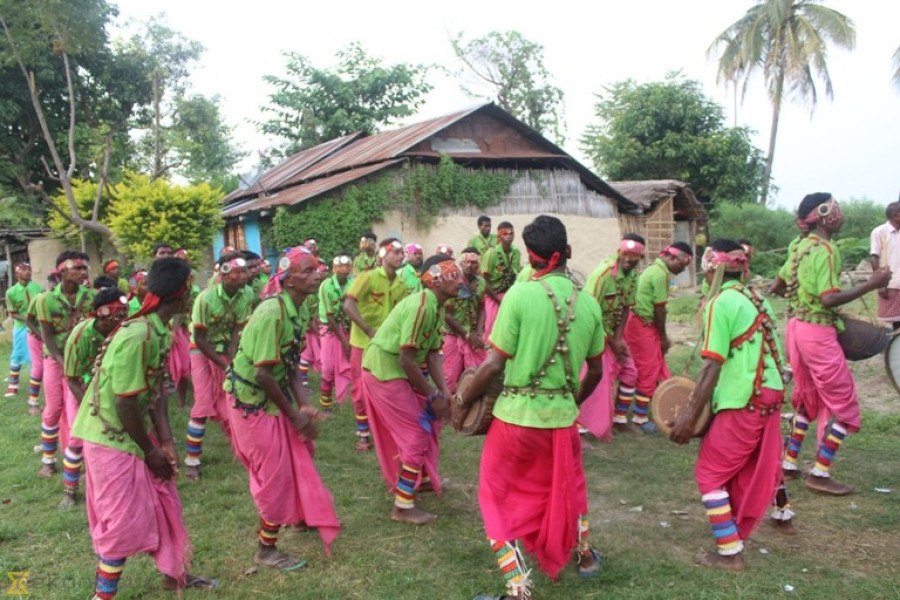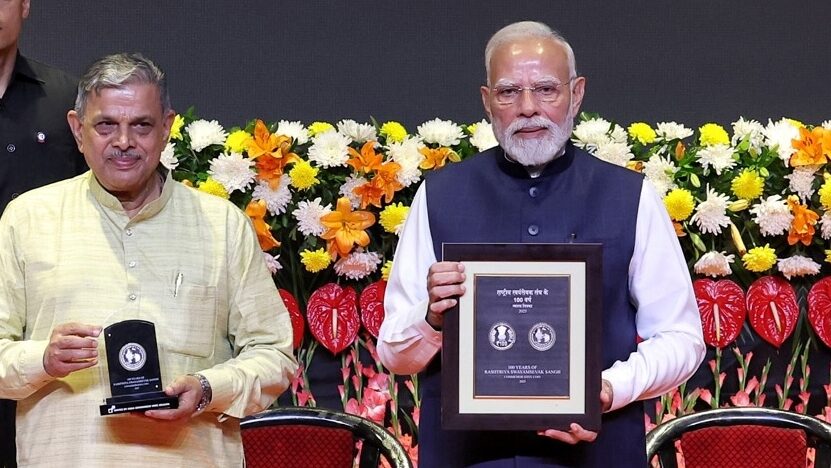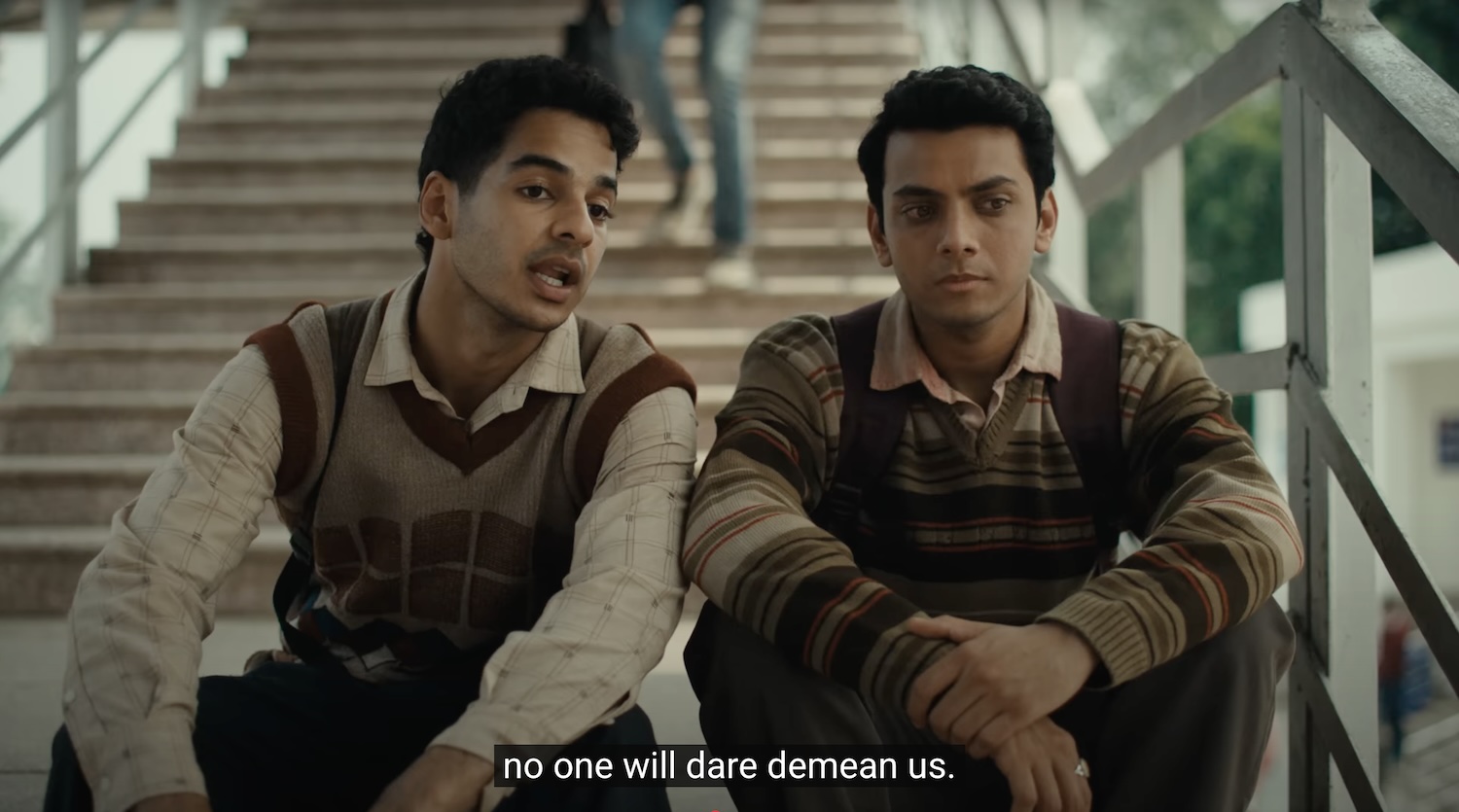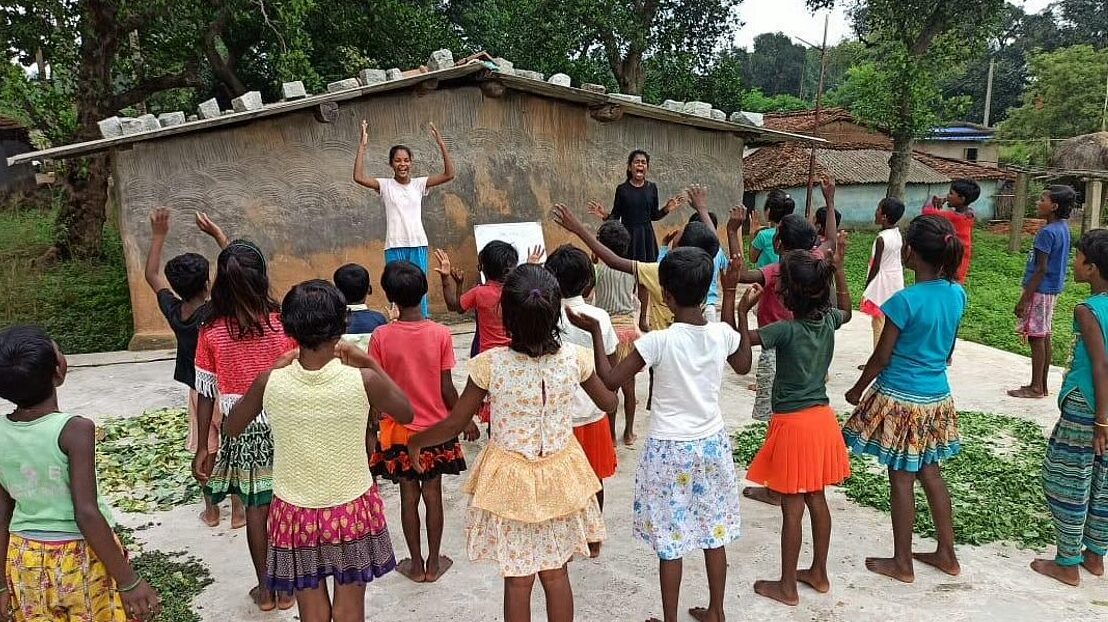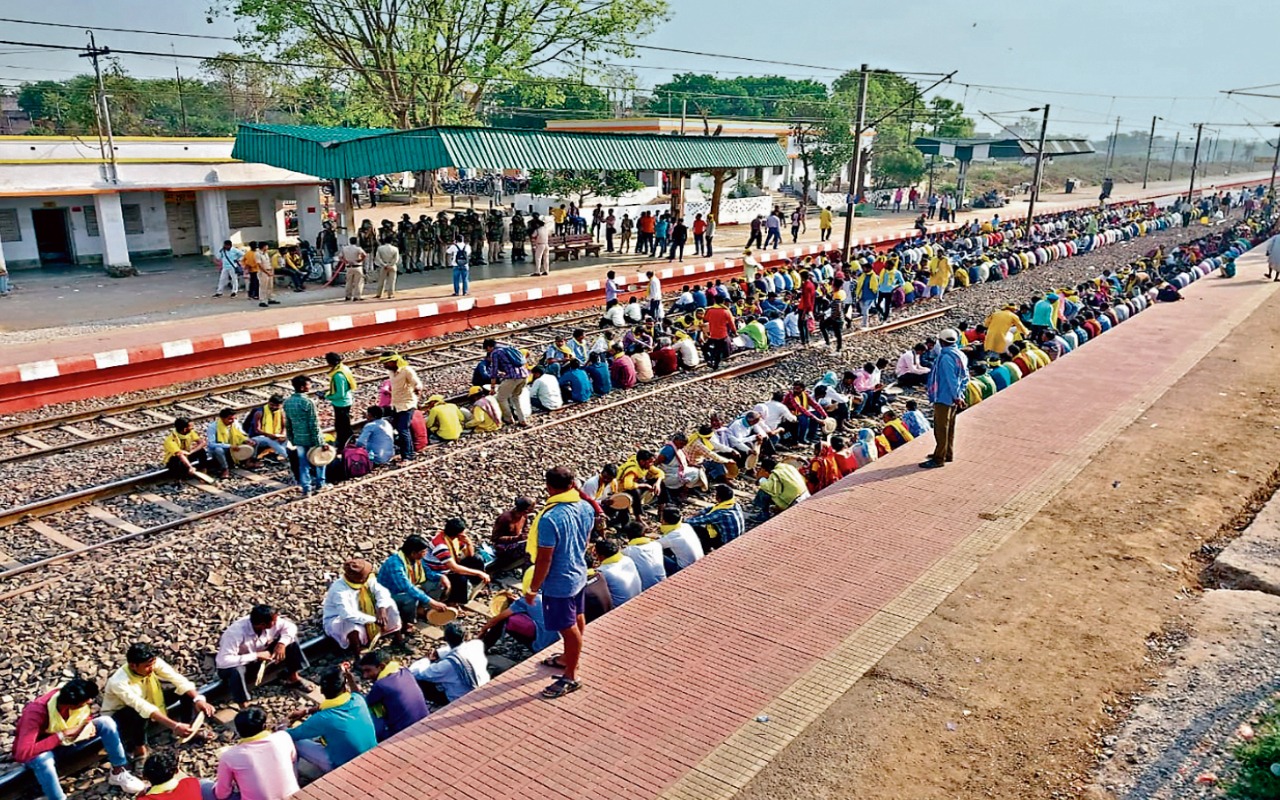Vasavi Kiro is a former member of the Jharkhand State Commission for Women and a well-known Adivasi author and social activist. As a journalist, she has been associated with The Times of India and Jansatta. She has led and participated in several movements and protests in Jharkhand. Jyoti Paswan did an extensive interview with her. This is the second and final part.
In the first part you read: Why Jharkhand continues to be a rich state of poor people
How was your relationship with Shibu Soren and other leaders?
I had an excellent rapport with Shibu Soren and many other leaders. As a journalist, I used to cover their press conferences, rallies, etc. Long ago, Shibu Soren had proposed that I should join the Jharkhand Mukti Morcha. But at the time I wanted to focus on my studies. My family’s economic situation was far from good. So, I decided that I should make something of myself first. I told him that I was not interested in joining politics at that stage. I had first met Dishom Guru (Shibu Soren) in Ranchi. I was accompanied by a Santhali girl. That girl used to cook at Guru ji’s Delhi residence in 1993, when he was an MP. In 2007, she was gang-raped at Hazaribagh. A case was registered but no action was taken. She met me in 2009. At the time, Shibu Soren was the chief minister of Jharkhand. She wanted to meet him. I took her to Shibu Soren. Hemant Soren was also present when we met. They helped the girl. Since then, they have known me. I had good relations with Hemant Soren as well. In 2016, Hemant Soren constituted a “Samanvay Samiti” (Coordination committee). Left-wing workers and social activists were members of the committee. I, too, was a member. The Samiti met twice or thrice. Displacement was a major issue and at the meetings we demanded the constitution of a “Displacement Commission”. I said that eight reasons were responsible for the displacement of Adivasis in Jharkhand. The first was mining (the state has deposits of 49 different minerals, including coal, uranium, limestone and iron ore). The Adivasis lose their lands and are displaced. The other reasons are setting up of private and public-sector industrial plants, national parks and sanctuaries and implementation of small and large irrigation and railway projects. These have also led to displacement. The Swarnarekha Project, Damodar Valley Project, Ajay Barrage and thermal and hydel power projects have forced the people to migrate. The public and private sector companies have different rehabilitation packages. I believe that we need a uniform package, which ensures jobs and compensation for all the members of a displaced family. Some MLAs have supported my demand for a Displacement Commission. This issue is under serious consideration. Displacement is a big issue in Jharkhand. We want a displacement-free Jharkhand. We want debate and discussion on the model of development. We want development without a single person being displaced. Development without displacement is possible. The central government has constituted Niti Aayog. It has hosts of scholars and specialists. The Aayog’s library is overflowing with thick books. It has Oxford and Cambridge graduates. Let them find out how development can be done without displacement taking place. Displacement is not something new. It has been going on since colonial times. During British rule, lakhs of Sal trees were felled for laying railway lines. Now, again, trees are being marked for felling. They will be felled. Lakhs of trees are being felled for building four- and six-lane highways. This is having an adverse impact on the environment and is also changing the texture of soil. The people inhabiting the state are being affected. Nature’s balance is being disrupted. Displacement is eating into the vitals of Jharkhand. Displacement of people is killing Jharkhand. The problem of displacement has to be resolved, especially since we are now a separate state. We need a development model that ensures that Adivasis are not forced to abandon their villages. Until such a model is put in place and adhered to, we will have to agitate.
In a sense, the Adivasis are sinking into a morass. For want of resources, they have been caught in a web of deprivation. They are dying a kind of death which does not involve bloodletting. They are being massacred in the name of development. And no one is talking about them.
The Bharatiya Janata Party (BJP) says that the Congress is responsible for migration and displacement. “Now, you [BJP] are running the country,” I say. “Then why are you not finding a solution? Why should Adivasis be sacrificed on the altar of development?” In Jharkhand alone, around a crore Adivasis have been displaced. These people have lost their fields as well as their homes. Then, there are some whose lands have been acquired but homes have been spared. Such persons are not displaced but “affected”. Thus, besides the displaced, there are also a large number of people who have been affected by these development projects. The affected people are being completely ignored. There are no programmes for them. For instance, in a village called Dhedhmag, all the residents have lost their fields, none of whom have lost their homes. Now, just tell me if they are affected. They can live there but their fields are gone. Where will they grow paddy? What will they eat? There are many such villages. There is a village called Lakma. Once I told the chief minister that if he visited Lakma he would find that every single resident was dying of TB. What sort of nation are we building? You displace 50,000 people to build a factory. Outsiders settle on that land. And that factory makes a profit for four-five years and then slips into the red for good. Someday, maybe after 50 years, that factory will shut up shop. If that happens, the land acquired from Adivasis should be restored to them. But that is not done. Then why should the Adivasis give up their land for the sake of the “nation”? We are involved in a struggle in Jharkhand on this issue. We are demanding that the land taken away from the Adivasis should be returned to them.
Immediately after the formation of Jharkhand, you were appointed a member of the Commission for Women constituted by the then Babulal Marandi government. How was that experience?
Babulal Marandi hadn’t constituted the Commission for Women. Babulal Marandi became the chief minister when the BJP came to power in Jharkhand in 2000. It is tragic that “Gau Palan” and “Gau Vansh Raksha” commissions came into existence in Jharkhand before the Women’s Commission did. The state didn’t have a Women’s Commission till 2005. That year, Arjun Munda became chief minister [for the second time]. Then [the following year], his government lost majority and just before quitting, he ordered the setting up of two commissions – Jharkhand State Scheduled Tribes Commission and Jharkhand State Women’s Commission. The ST Commission went into cold storage. The Women’s Commission was constituted on 16 September 2006 and an IAS officer, Laxmi Singh, became its first chairperson. In 2010, when I was nominated as a member of the commission, the state was under the President’s rule. A social activist had proposed my name to the Social Welfare Department saying that I had done a lot of work for the Adivasis and for the women and that I should get a place in the Women’s Commission. I was supposed to be appointed as the chairperson but the then Governor picked a woman from Uttar Pradesh – Hemlata S. Mohan, who was the principal of Delhi Public School (DPS), Ranchi – for the job. The other member, Anuradha Chaudhary, was from Bihar. So these kinds of injustices were done to Jharkhand. Such injustices continue. The people from the state are portrayed as incompetent.
You have been a keen observer of politics. But as far as I know, you have kept away from electoral politics. Why?
Yes. I am active on political issues. But I haven’t joined any political party as yet. As a journalist, I have attended the conclaves and protests of politicians of all hues. I have also read and written about these issues and also debated with others. Attending these demonstrations and conclaves have enhanced my knowledge. Leaders like Shibu Soren invited me to join politics. Today, I regret not joining any political party. I should have done that.
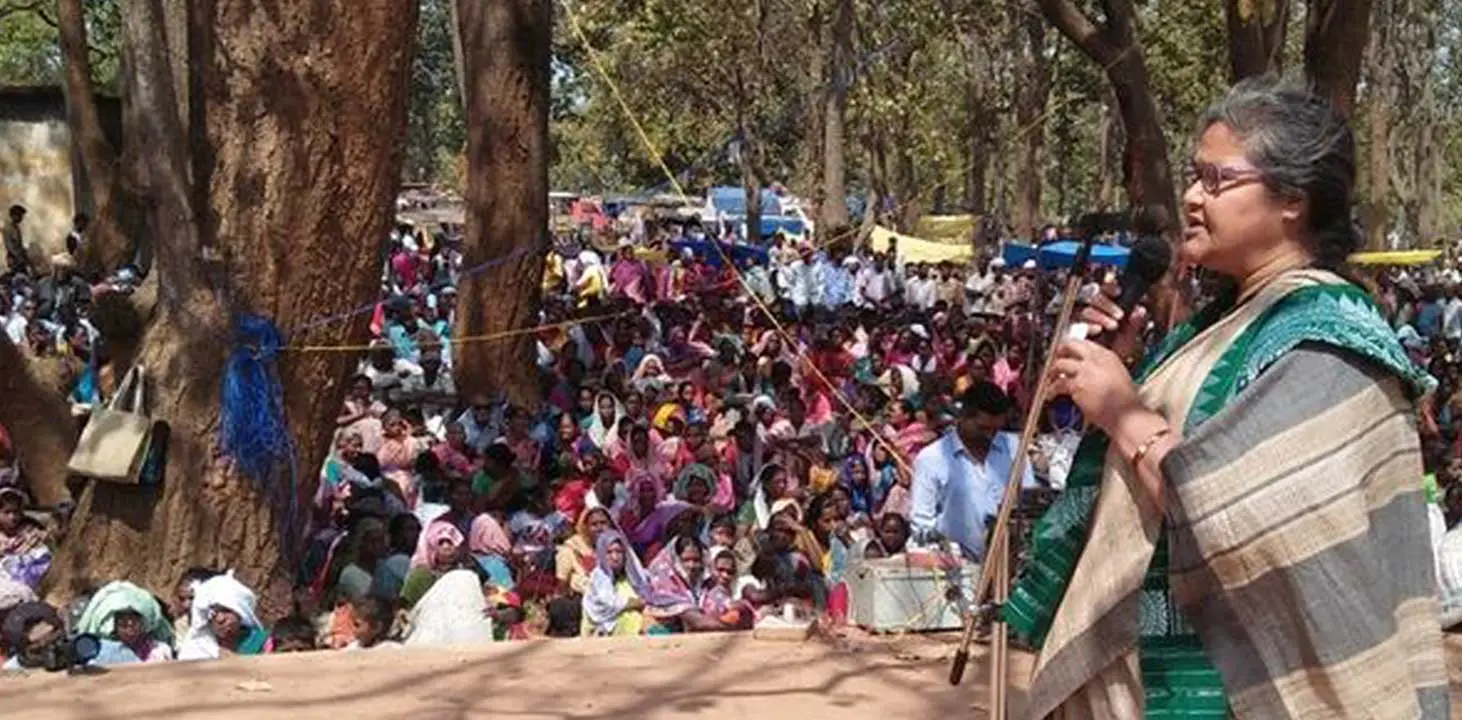
Adivasi culture and languages are under threat. Even non-Adivasi languages like Bhojpuri, Maithili and Magahi are also being throttled. Your take?
I don’t think non-Adivasi languages like Bhojpuri, Magahi and Maithili are being throttled in the way Adivasi languages are. I believe the development of Adivasi languages hasn’t got attention. There is no Adivasi language policy for promoting Adivasi languages – this, when language had played a key role in the creation of Jharkhand. The proceedings in the rallies and meetings of supporters for a separate state were invariably conducted in local languages like Kurukh, Santhali and Mundari. These languages were used to tell the people why Jharkhand should be a separate state and how they could help create it. Even 20 years after the creation of the state, no concrete action plan has been drawn up for the development of the local languages that were used to mobilize the people. There is no policy related to local languages. Santhali has been included in the Eighth Schedule but it is not used for official communication. That is not all. Adivasi languages got the status of second official language only after protests and agitations. This was done ten years after the creation of the state – during Shibu Soren’s chief ministership. This was not done by Arjun Munda or any BJP government. In 1982-83, a Department of Regional and Tribal Languages was established in Ranchi University. That was the outcome of the efforts of Ramdayal Munda, Prabhakar Tirkey, Rose Kerketta and other professors at the institution. They had also played a key role in the movement for a separate Jharkhand state. Since 1983, nine Adivasi languages have been taught in this department. But it took 40 years to establish separate departments for each language. That was done two years ago. These departments have no resources. They just have been allotted a room each. There are no computers. A big table and a couple of chairs is what each department has. These departments need to be well equipped. Then, there are researchers who are working on these languages and authors who are writing in these languages. There should be opportunities for them to be employed. They have degrees but they are unemployed. They will get jobs only if a policy is drawn up providing for teaching in these languages as part of primary education. Jharkhand is a symbol of Adivasi identity and has its own traditions and customs. But when they are being ignored, even where they belong, how can we talk about other languages! When we ourselves are hungry, how can we think about filling the stomachs of others?
How do you define Adivasi feminist writing? How is it different from the literature in Hindi and English being written by women?
The literature being written by Adivasi women is about their experienced reality. They are writing about the ironies and the tragedies of their own life. They are writing about social issues as well as about nature. There is a lot of difference between the Adivasi literature and the literature being written by the others in Hindi and English. The women writing in Hindi and English are writing “Swantah Sukhay” (for self-satisfaction). I want to quote some lines from a poem by Nirmala Putul:
Tum banate ho hazaron pattal
Par hazaron pattal nahin bhar paate tumhara pet
Tumhare hathon ke banaye pattal, bharte hain hazaron pet
Par nahin bhar paate tumhara pet
[You make thousands of pattals (leaf plates)
But thousands of pattals don’t fill up your stomach
The pattals made by you fill up thousands of stomachs
But they do not fill up your stomach]
This is not the story of one Adivasi woman. It is the story of thousands of Adivasi women who collect leaves from the forests, stitch them together into pattals and donas (leaf bowls) and sell them. These plates and bowls are used to fill the stomachs of thousands of people. But the Adivasi woman who makes thousands of pattals is condemned to hunger.
Such imagery cannot be found in the literature being written by non-Adivasi women. That is because they talk about their own pains, their own issues. Their social concerns are different. Their literature is about resistance to feudalism, oppression by husbands, indifference towards families and social norms and traditions. They underline the oppression and the atrocities they have to face in their society. We don’t have to wear a veil. In our society, men and women go to fields, the barns and the markets together. There is an openness in our society. So their expressions are bound to be different. These two literatures cannot be compared. There is violence in our society against women said to be practising witchcraft. This is not there in their society. Adivasi women have written on it.
Of course, our Adivasi women litterateurs have not done serious work on displacement. Not much has been written on it – and this when one can get to know numerous accounts of pain caused by displacement in Ranchi itself. But neither stories nor poems are being written on these displaced people. I have been consistently insisting that the orientation of literary writings should change. Yes, the mountains and the hill are enchanting. Yes, the greenery is mesmerizing. But don’t confine yourself to these topics. The Adivasi communities are undergoing all kinds of painful experiences and facing myriad problems. These need to be brought to light. As I had told you, there is a massacre going on out there. You may not see bloodletting but people are dying a slow death. These bloodless massacres are yet to find an expression in literature.
Adivasi literature is also different because human values are very dear to Adivasi communities. Other kinds of literature also reflect human values but not to that extent. In our community, if a woman starts living with her in-laws after marriage and finds that she cannot adjust, say, with their food habits, she can always leave her husband. Hindu women cannot do this. In my family, my brother’s wife left him and went away. Later on she remarried and so did my brother. And this did not kick up a furore. It was seen from a purely human angle. It’s their life and if they feel that they will be happier living their life in a certain way, they are free to do it.
How do you view Dalit literature?
Dalit literature is very rich and very well organized. It gives a very powerful expression to the pain of the community. There is a substantial number of Dalit writers and they have a wide reach. The Adivasis never got that kind of reach. The Dalits organized themselves well. Dr Ambedkar stood up for them and showed them the right path. Leaders like Marang Gomke and Jaipal Singh Munda could have showed the way to the Adivasis. But the contemporary politicians crushed them. Their voice was not allowed to reach the Adivasis. Ambedkarite literature is known for its sharp attacks on Brahmanism, capitalism and feudalism. There are innumerable small and big forums for Dalit activists and writers. But the Adivasis have no such forums. The Dalits are far better organized than the Adivasis.
Do you feel the need for some sort of coordination or cooperation between the Adivasi and non-Adivasi writers? An exchange of views will facilitate expansion of Adivasi literature and enrich it.
We had raised this issue in the Adivasi Sahitya Sammelan. We said that “Tribal India” is “Unseen India”. It is yet to be seen and explored. The people of the rest of India are yet to see Adivasi India. Adivasi India has naxalism, it has illegal usurpation of land, it has moneylenders, it has atrocities and for all these reasons there is disquiet and unrest in this India. There is no concrete scheme for their advancement – on how to ensure that their children go to school, how to educate them and so on. There is a serious shortage of schools in the Adivasi areas. You will be surprised to know that the Adivasi children of villages where Santhali, Gondi, Kurukh, Mundari are spoken – these children cannot even converse in Hindi. What kind of India are you building? The Congress ruled for 60 years. What kind of India did it build? Since 2014, the BJP has been in power. What kind of India is it building? Adivasis are missing from this India. So, we raised this issue very seriously at the Adivasi Sahitya Sammelan. We said that the Adivasis were so oppressed and so neglected that the Adivasis entered the field of literature quite late. The Adivasis were never given a forum to express their views. As Varun Solmane writes:
Ham stage par gaye hi nahin
Hamein manch par bulaya hi nahin
Unhonen hamein anguli se jahan baithne kee jagah dikhayee
Ham wahee baith gaye
Who manch par chadh gaye aur hamara dukh hamein hi batate rahe
Jo ki kabhi unka hua hee nahin
(We never went on the stage,
We were never invited to the dais,
They waved us on to the place where we were supposed to sit,
And we dutifully sat down there,
They climbed on to the dais and started telling us about our pain,
Pain that was never theirs)
This continued. They did not want to invite us on to the dais and hear us out. Everyone else climbs on to the dais, seat the Adivasis among the audience and lecture them about their problems. Hear the Adivasis out, allow them to speak and write, let them sing and dance. And then you will know what the Adivasis want to say.
Be that as it may, now we are expanding the reach of Adivasi literature. Through the All India Tribal Literary Forum, we have got works in Mizo, Santhali and other Adivasi languages translated into Hindi and English. That is how the Hindi world has come to know so much about the Adivasis. What is ironic is that even literature written in one Adivasi language is not available to Adivasis speaking another language. So, what we need is an Adivasi Bhasha Sahitya Akademi which can compile Adivasi literature written in different languages and promote exchange of ideas. We are working in that direction.
My appeal to the Adivasi authors is that now that they have learnt to write, new doors have opened up for them. They are writing romantic poems on rivers, hills and waterfalls. They can write about all that. That is not a problem. But then who will write about the Adivasi who has been uprooted from his home and hearth, who has forgotten his language, who has forgotten how to dance and sing, who has forgotten how to play maandar and nagada, who has lost his identity, his livelihood, his health and who cannot study!
Your latest book has just been published. Tell us about it.
The title of my book is ‘Bharat Ki Krantikari Adivasi Auratein’ (India’s revolutionary Adivasi women). In the book, I have underlined the role of women in the Adivasi uprisings in India. How these women fought the British army, for which they were hanged, and so on. These Adivasi women sacrificed for protecting their jal, jangal, zameen, their society and their community. In this book I have underscored how there is no lop-sidedness in the Adivasi community. Women and men play an equal role in any struggle. For instance, queens ruled in Rohtas Garh. They fought wars and never conceded defeat. They died on the battleground. Gaya Munda’s wife, while holding her baby in her arms, struck the deputy commissioner of Ranchi with an axe. I believe that what I have put together is an introductory book. It is a foundation. More research can reveal new facts. We may even be in a position to put together a 1000-page book. I lacked resources and had my journalistic assignments to complete. Whatever facts I could collect, I used them to prepare this book. No attempt has so far been made to compile the history of Adivasi women. Ranchi University has also not done anything on that front, it should have.
Adivasi women are free to make decisions about their marriage. Many Adivasi women have been using this right to marry non-Adivasis. Is this trend adversely impacting Adivasi language, society and culture?
Yes, it has its minus points. Of course, the Constitution gives every woman the right to marry someone of their choice. No one can stop them. Recently, I read a report on Adivasi women who have become Mukhiya or Sarpanch. To take advantage of the government schemes for Adivasis, non-Adivasis have been singling out these women to marry. This is happening on a large scale in the Santhal Pargana.
Adivasi girls who are good at academics or those with good jobs are drawn into marriage by non-Adivasis. This seems to be a conspiracy to bring down the population of the Adivasis. Children born of couples often adopt non-Adivasi lifestyle and culture. This reduces the already low population of the Adivasis. Women are matrashakti, they create families. If women become part of another community, there is a real possibility of a fall in the population of the Adivasis. The Adivasis fear that it will erode their culture. This danger is always there. The Adivasi girls who go to Delhi for work often marry Bengalis, Biharis or anyone else who provides them sanctuary.
But the thing is that you cannot stop these kinds of relationships from forming. One can fall in love with anyone. No one can control this emotion. But the point is that this brings Adivasi girls to a home where there is caste, there is religion. There have been cases in which the Adivasi girls have not got the respect they enjoyed in their community in non-Adivasi homes.
This is an assault on Adivasi culture. Some such weddings are born of mature relationships. But even they hurt the Adivasi community. The Adivasi community has been forced to ponder as to why their girls are becoming part of the non-Adivasi communities. Is there some problem with our families? Are we not looking after them well? What are the reasons – whether they are social or cultural? The leaders of the Adivasis and their organizations are looking into what the girls are getting in non-Adivasi families which we cannot give them.
Any books in the pipeline? Which projects are you working on now?
I am planning to bring out the second volume of the book on displacement. In the first volume, I have presented comprehensive figures regarding the anti-displacement movements like the Medha Patkar-led movement against Narmada Valley Project and protests against Periyar Dam, Hirakud Hydel Project, Bhakra-Nangal project and those in Jharkhand. But it does not have enough material on displacement caused by mining projects. I have given the figures but in the second volume I want to show how various communities have been affected by displacement.
Then, I have worked on medicinal plants. I have published a book on Mahua. I plan to bring out a book on Saat Phools.
What is your message to today’s writers?
They should travel and read as much as possible. They should spend time with well-known writers, talk to them. If they don’t do this, they won’t be able to produce good writing. The writers of the present generation should identify the burning issues and write about them.
(Translation: Amrish Herdenia; copy-editing: Anil)
Forward Press also publishes books on Bahujan issues. Forward Press Books sheds light on the widespread problems as well as the finer aspects of Bahujan (Dalit, OBC, Adivasi, Nomadic, Pasmanda) society, culture, literature and politics. Contact us for a list of FP Books’ titles and to order. Mobile: +917827427311, Email: info@forwardmagazine.in)
The titles from Forward Press Books are also available on Kindle and these e-books cost less than their print versions. Browse and buy:
The Case for Bahujan Literature
Dalit Panthers: An Authoritative History



